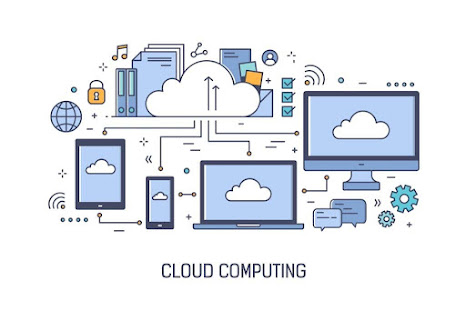What is Cloud-Computing ?
Cloud computing is a paradigm of computing that utilizes a network of remote servers, often hosted on the internet, to store, manage, and process data and applications. Instead of relying on local servers or personal computers, cloud computing enables users and organizations to access computing resources and services over the internet on-demand, paying only for the resources they use.
Here's a detailed explanation of cloud computing:
1. **On-Demand Self-Service:** Cloud computing provides users with the ability to provision computing resources, such as processing power, storage, and network capacity, as needed without requiring human interaction with service providers. Users can access and manage these resources through web interfaces or APIs (Application Programming Interfaces).
2. **Broad Network Access:** Cloud services are accessible over the internet from a wide range of devices, including laptops, desktops, smartphones, and tablets. Users can access applications and data from anywhere with an internet connection.
3. **Resource Pooling:** Cloud providers maintain vast pools of computing resources, including processing power, storage, and networking equipment. These resources are shared among multiple customers, allowing for efficient utilization and scalability.
4. **Rapid Elasticity:** Cloud services can quickly scale up or down based on demand. Users can easily request additional resources when needed, and the cloud infrastructure can automatically allocate and release resources to match fluctuating workloads.
5. **Measured Service:** Cloud computing services are metered, providing transparency and control over resource usage. Users are billed based on their actual consumption of computing resources, such as CPU hours, data storage, or network bandwidth.
Cloud computing is typically categorized into three primary service models:
a. **Infrastructure as a Service (IaaS):** In IaaS, cloud providers offer virtualized computing resources over the internet. Users can rent virtual machines, storage, and networking infrastructure on a pay-as-you-go basis. This model gives users the flexibility to manage and control the operating systems, applications, and data deployed on the infrastructure.
b. **Platform as a Service (PaaS):** PaaS provides a platform and environment for developers to build, deploy, and manage applications without the complexity of managing underlying infrastructure. Developers can focus solely on writing and running code, as the platform handles tasks such as provisioning servers, managing databases, and scaling applications.
c. **Software as a Service (SaaS):** SaaS delivers software applications over the internet on a subscription basis. Users can access and use the software through web browsers without needing to install or maintain the application locally. SaaS offerings cover a wide range of applications, such as email, productivity tools, customer relationship management (CRM), and collaboration software.
Advantages of Cloud Computing:
1. **Cost Savings:** Cloud computing eliminates the need for upfront capital investments in hardware and infrastructure, allowing businesses to pay only for the resources they consume. It reduces the total cost of ownership and shifts IT expenses from capital expenditures to operational expenses.
2. **Scalability and Flexibility:** Cloud services offer rapid scalability, allowing businesses to quickly adapt to changing workloads and demands. Organizations can easily expand or shrink their resources as needed, avoiding overprovisioning and underutilization.
3. **Reliability and Availability:** Cloud providers often maintain multiple data centers with redundant infrastructure, ensuring high availability and reliability for applications and data. Service-level agreements (SLAs) guarantee a certain level of uptime and performance.
4. **Global Reach:** Cloud services are accessible from anywhere with an internet connection, enabling businesses to reach a global audience and serve customers in different regions.
5. **Faster Time to Market:** Cloud computing reduces the time required to set up and configure infrastructure, allowing developers to focus on building and deploying applications quickly.
6. **Automatic Updates and Maintenance:** Cloud providers handle updates, patches, and maintenance of the underlying infrastructure, freeing up resources for businesses to concentrate on core activities.
Despite its numerous advantages, cloud computing also presents some challenges, such as data security and compliance, potential vendor lock-in, and the need for reliable internet connectivity. Therefore, businesses need to carefully evaluate their requirements and choose appropriate cloud strategies and providers to fully leverage the benefits of cloud computing while mitigating potential risks.

Comments
Post a Comment